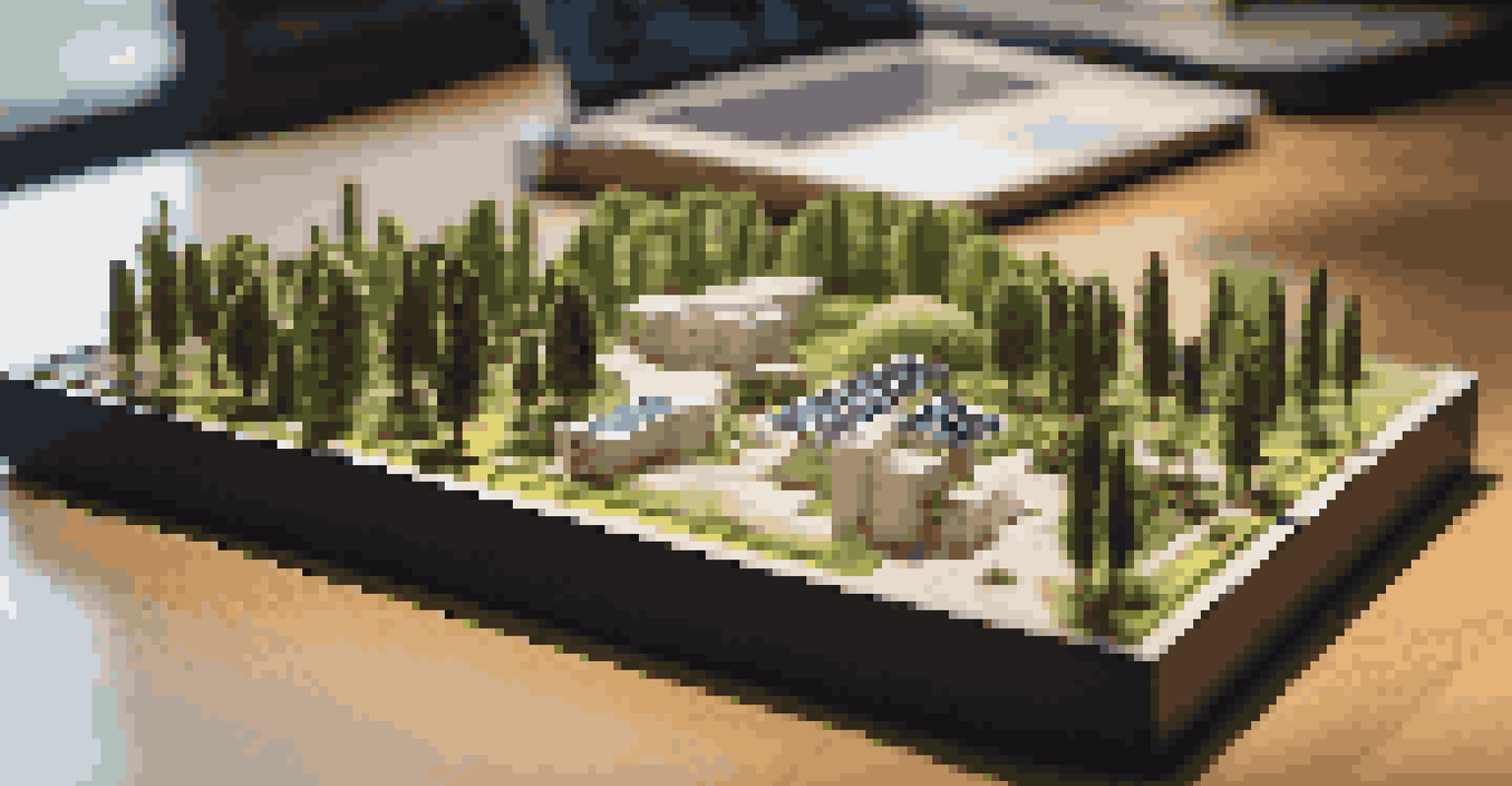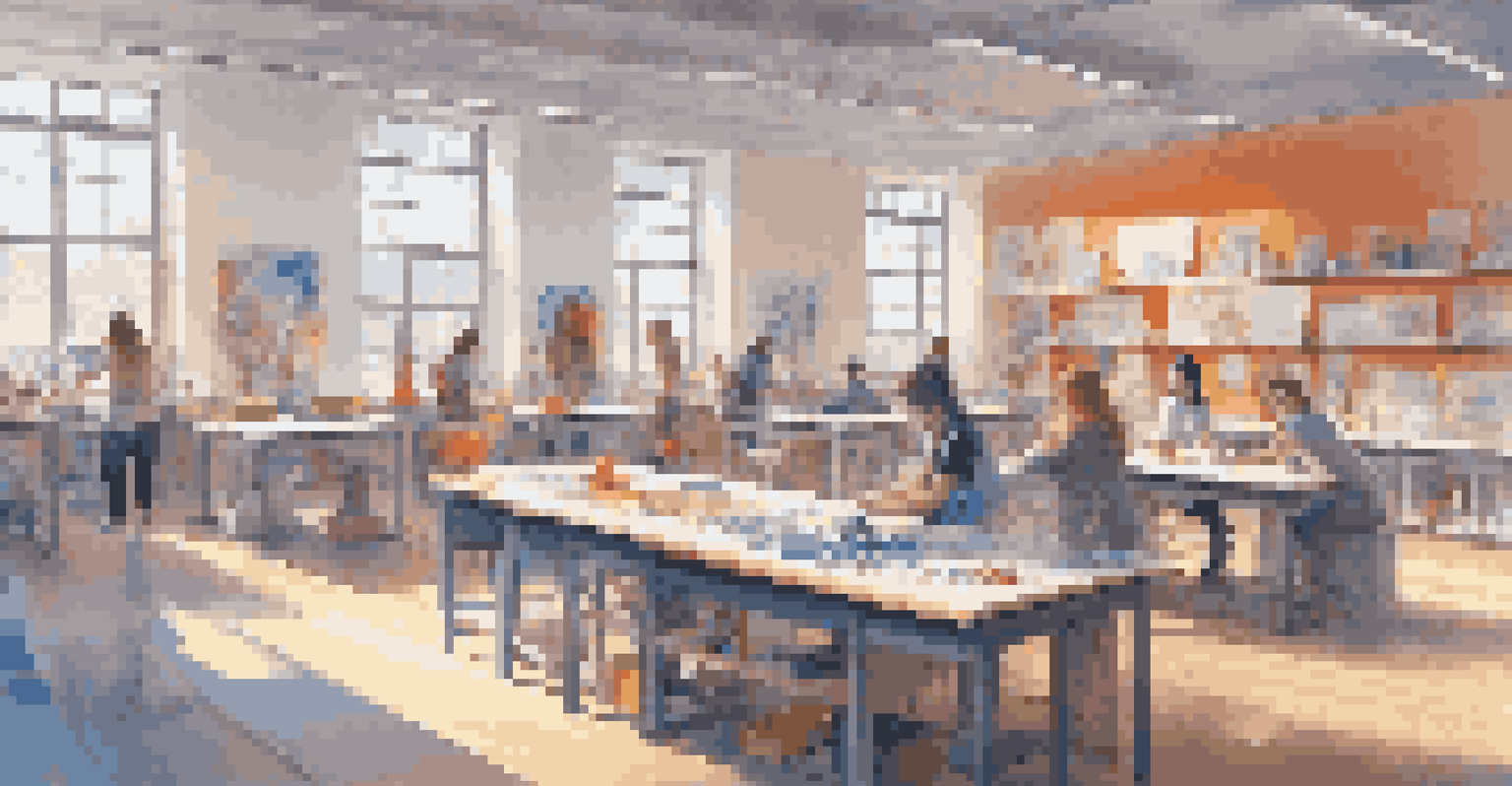Embracing 3D Printing Technologies for Collaborative Learning

Understanding 3D Printing and Its Impact on Learning
3D printing, or additive manufacturing, is the process of creating three-dimensional objects from digital files. This innovative technology has revolutionized various fields, including education. By transforming ideas into tangible products, it helps students visualize concepts more clearly, making learning interactive and engaging.
3D printing is not just a technology; it's a tool for creativity, collaboration, and innovation in education.
Imagine a group of students tackling a complex science project. With 3D printing, they can turn their theoretical models into physical prototypes. This hands-on experience fosters a deeper understanding of the subject matter and encourages creativity, as students explore different designs and functionalities.
Moreover, 3D printing bridges the gap between theory and practice. Instead of merely reading about structures or ecosystems, students can produce models that represent their knowledge, enhancing retention and comprehension. This dynamic approach promotes a collaborative learning environment where ideas flourish.
Fostering Collaboration through 3D Printing Projects
Collaboration is at the heart of effective learning, and 3D printing promotes teamwork in educational settings. When students work together to design and create, they learn valuable communication and problem-solving skills. These projects often require group brainstorming, which encourages diverse perspectives and creative solutions.

For instance, consider a classroom project where students must design a sustainable city model. By collaborating on the design and utilizing 3D printers, they can divide tasks based on individual strengths. This not only enhances their social skills but also nurtures a sense of community and shared purpose.
3D Printing Enhances Learning
This technology transforms abstract concepts into tangible models, making education more interactive and engaging.
Additionally, working collaboratively on 3D printing projects instills a sense of accountability. Each member contributes to the final product, motivating them to perform their best. This collective effort not only leads to better results but also strengthens relationships among peers.
Enhancing Creativity and Innovation in Education
3D printing empowers students to think creatively and push the boundaries of traditional learning. With the ability to bring their visions to life, learners can experiment with designs and ideas that may not be possible through conventional methods. This freedom to innovate fosters a culture of experimentation and exploration.
The future belongs to those who can think critically and creatively, skills that 3D printing fosters in students today.
Imagine students designing a unique invention to solve a real-world problem. With 3D printing, they can prototype their ideas quickly, test them, and iterate based on feedback. This iterative process encourages critical thinking and adaptability, essential skills in today's fast-paced world.
Furthermore, the creative potential of 3D printing extends beyond the classroom. Students who engage in this hands-on learning are better prepared for careers in fields like engineering, architecture, and design. By nurturing creativity today, we equip future innovators for tomorrow's challenges.
Building Real-World Skills Through 3D Printing
In addition to enhancing creativity, 3D printing provides students with practical skills that are highly sought after in today’s job market. Skills such as design thinking, project management, and technical proficiency are developed as students navigate the 3D printing process. These competencies are invaluable across various industries.
For example, students learning to use CAD (Computer-Aided Design) software for 3D modeling gain experience that can translate directly into careers in engineering or architecture. They learn how to conceptualize and execute projects from start to finish, a skill set that employers greatly value.
Fosters Collaboration Among Students
3D printing projects encourage teamwork, communication, and problem-solving skills through collaborative design and creation.
Moreover, engaging with 3D printing technology helps students become more comfortable with advanced tools and software. As technology continues to evolve, having a foundation in these areas will give learners a competitive edge in their future endeavors.
Encouraging Problem-Solving and Critical Thinking
3D printing is an excellent tool for developing problem-solving and critical thinking skills in students. As they design and create objects, they encounter challenges that require them to think analytically and devise solutions. This process encourages a growth mindset, where students learn to view obstacles as opportunities for learning.
For instance, when students face issues during the printing process, they must troubleshoot and adapt their designs. This hands-on experience teaches them resilience and resourcefulness, qualities that are essential for success in any field. Learning to solve problems collaboratively also enhances their teamwork skills.
Furthermore, critical thinking is crucial in evaluating the effectiveness of their designs. Students learn to assess their work, consider feedback, and make necessary adjustments, leading to improved outcomes. This continuous cycle of evaluation and improvement prepares them for real-world challenges.
Integrating 3D Printing into Curriculum Across Subjects
To fully harness the benefits of 3D printing in education, it’s essential to integrate this technology across various subjects. From science and math to art and history, the applications of 3D printing are vast and diverse. This interdisciplinary approach enriches the learning experience and makes education more relevant.
For example, in a history class, students could recreate artifacts from ancient civilizations using 3D printing. This hands-on activity not only brings history to life but also fosters a deeper appreciation for cultural heritage. Similarly, in mathematics, students can visualize geometric concepts by printing 3D shapes.
Prepares Students for Future Careers
By developing practical skills like design thinking and technical proficiency, 3D printing equips students for success in various industries.
By incorporating 3D printing into different subjects, educators can create engaging, project-based learning experiences. This not only keeps students motivated but also helps them connect the dots between various fields of knowledge, fostering a holistic learning environment.
Overcoming Challenges in Implementing 3D Printing in Education
While the benefits of 3D printing in education are clear, there are challenges to consider. Schools may face budget constraints, limited access to technology, or a lack of trained educators experienced in 3D printing. Addressing these barriers is crucial for maximizing the potential of this innovative tool in the classroom.
One approach is to seek partnerships with local businesses or organizations that specialize in technology. By collaborating, schools can gain access to resources, training, and expertise that may otherwise be out of reach. This not only enhances the learning experience but also strengthens community relationships.

Additionally, educators should prioritize professional development to ensure they are equipped to teach with 3D printing technology. By investing in training, schools can empower teachers to integrate 3D printing into their curriculum effectively, paving the way for a more dynamic and engaging educational experience.
The Future of Collaborative Learning with 3D Printing
As technology continues to evolve, the future of collaborative learning with 3D printing looks promising. Innovations in 3D printing technology, such as faster printing speeds and more materials, will enhance the learning experience even further. The potential for customization and personalization in education will also grow, allowing students to tailor projects to their interests.
Furthermore, advancements in virtual and augmented reality may soon be integrated with 3D printing, creating immersive learning experiences. Imagine students exploring a virtual environment, designing objects, and printing them in real-time. This blend of technologies could revolutionize how we approach education and collaboration.
Ultimately, embracing 3D printing technologies in education not only prepares students for the future but also fosters a love for learning. By cultivating creativity, collaboration, and critical thinking, we can inspire the next generation of innovators and problem solvers ready to take on the world.